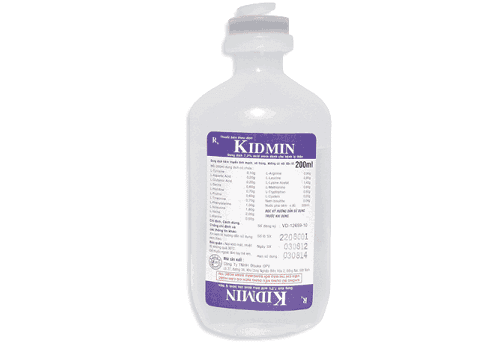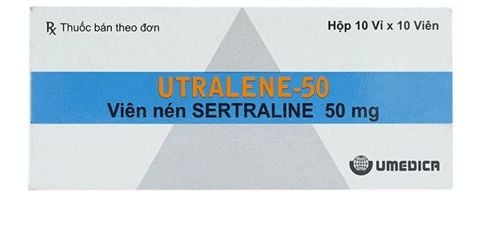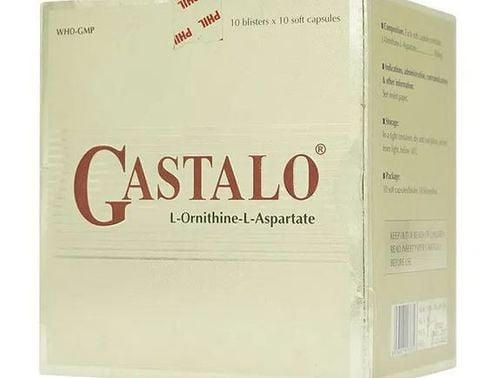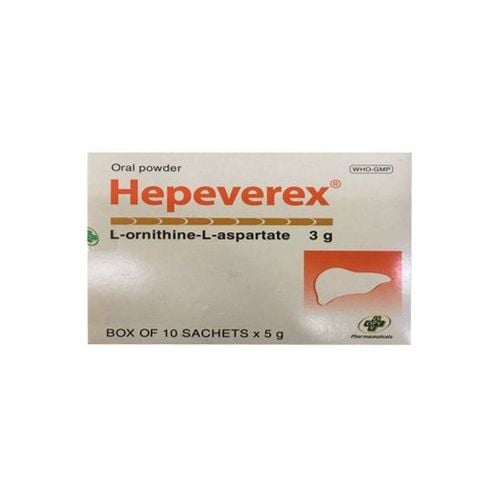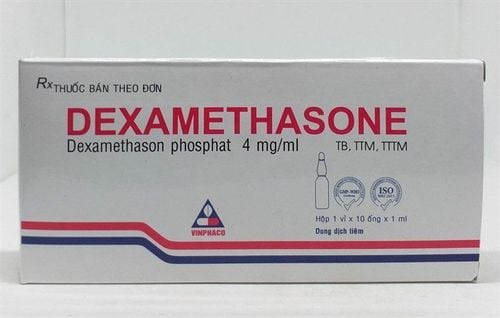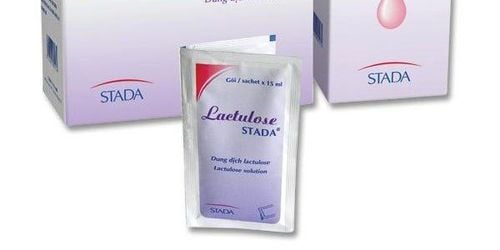This is an automatically translated article.
Clinisol is composed of a variety of essential and non-essential amino acids, and is indicated to compensate for nitrogen loss or to treat negative nitrogen balance. Let's find out what Clinisol is used for through the article below.1. Uses of Clinisol
Clinisol is an intravenous nutrient solution that provides a variety of amino acids - the raw materials for protein synthesis when used with other sources of calories, electrolytes, vitamins and minerals. Clinisol is indicated as an adjunct in the replacement of nitrogen losses or in the treatment of negative nitrogen balance in patients unable to utilize amino acids from the gastrointestinal tract. is reduced or the metabolic requirement for protein is significantly increased, as in extensive burns.Clinisol is contraindicated in the following cases:
Hypersensitivity to one or more amino acids in the drug formulation. Severe liver disease or hepatic coma. Anuria patient. Metabolic disorder associated with impaired nitrogen utilization.
2. Dosage of the drug Clinisol
Dosing must ensure nitrogen balance is achieved. The dose on the first day should be about half of the expected optimal dose and should be increased gradually to minimize side effects; Discontinuation of the infusion should also be done gradually to avoid hypoglycemia. Concomitant use of fat emulsions should be considered when prolonged parenteral nutrition (more than 5 days) is required to prevent essential fatty acid deficiency. Use in children: Dosage is quantified on the basis of grams of amino acids/kg body weight/day. Usually 2 - 3g amino acids/kg body weight for infants is generally sufficient to meet protein requirements and promote nitrogen balance. Adult Central Infusion: In adult patients, a minimum dose of 0.1 g nitrogen plus 4.4 g dextrose/fat emulsion per kg body weight per day is required for stabilization. weight and achieve nitrogen balance. For trauma or sepsis patients and those with abnormal nitrogen loss, the required dose may be as high as 0.3 to 0.4 grams of nitrogen (13 to 17 mL of 15% Clinsol solution) per kilogram of body weight. everyday. Periodic assessment of the individual patient's nitrogen balance is the best indicator of appropriate dosing. The use of an infusion pump is recommended to maintain a steady infusion rate during central venous infusion. Adults receiving peripheral intravenous infusion: Dilution of 250mL of Clinisol will reduce osmolality to levels suitable for peripheral intravenous administration. If administered concurrently, the fat emulsion will also contribute to the dilution of Clinisol. Please note that parenteral products must be visually inspected for unusual particulate matter and discoloration prior to use.
3. What are the side effects of Clinisol?
Local reactions including burning sensation, erythema, phlebitis, and infusion site thrombosis have occurred with infusion of amino acids into a peripheral vein. In such cases, the infusion site must be immediately changed to another vein. Generalized flushing, fever, and nausea have also been reported with infusion of amino acid solutions into the peripheral vein. The following complications have been reported with parenteral nutrition: Acidosis and metabolic alkalosis, hypophosphataemia, hypocalcemia, osteoporosis, uremia, hyperglycemia, dehydration, reversible hypoglycemia , osmotic diuresis, elevated liver enzymes, electrolyte imbalance, hypernatremia, coma, and death. Sepsis has been reported following intravenous therapy, particularly with long-term central venous catheter use. Complications that occur when central venous catheters are placed are pneumothorax, pleural effusion, incorrect placement of catheters, arteriovenous fistula formation, phlebitis, and thrombosis.
4. What are the precautions when using Clinisol?
This solution needs to be mixed before use, not for direct infusion. Administration of amino acid solutions in excess or in patients with hepatic impairment may lead to plasma amino acid imbalance, hyperglycemia, uremia, and coma. These patients should receive an appropriate dose of amino acids, depending on the patient's nutritional status. If symptoms of hyperglycemia appear, amino acid administration should be discontinued and the patient's clinical status re-evaluated. This product contains aluminum and may be toxic. Aluminum can reach toxic levels with prolonged parenteral administration if renal function is impaired. Babies born prematurely are at particularly high risk because their kidneys are not fully developed. Research has shown that patients with impaired renal function, including premature infants, who receive parenteral aluminum intake levels higher than 4 to 5 μg/kg/day will accumulate aluminum and affect the system. central nervous system or bone toxicity. During parenteral nutrition with concentrated dextrose and amino acid solutions, essential fatty acid deficiency syndrome may develop but may not be clinically apparent. This condition can only be done by testing plasma lipids. This syndrome can be prevented or corrected with appropriate treatment with intravenous fat emulsions. For adequate nutritional support, the parenteral nutrition regimen must include multiple vitamins and trace elements. When initiating and terminating the parenteral nutrition infusion, it should be done gradually to allow for correction of endogenous insulin release. Peripheral or central intravenous nutrition is a special technique that requires training by trained personnel. Complications that occur with central venous catheterization include sepsis and venous irritation due to the hypertonicity of the solution being infused. The risk of sepsis is increased with long-term use of central venous catheters. It is essential to follow a regimen that is carefully prepared and based on current medical standards. Pregnancy: Animal reproduction studies have not been performed. It is also not known whether Clinisol can harm an unborn baby. Therefore, Clinisol should be used during pregnancy only when clearly needed. Lactation: Caution should be exercised when Clinisol is administered to a nursing woman. Use in Children: The safety and effectiveness of Clinisol in pediatric patients have not been established by adequate studies. The article has provided an overview of Clinisol. If you have any questions or need more information about Clinisol, you should contact your doctor or pharmacist for advice.




